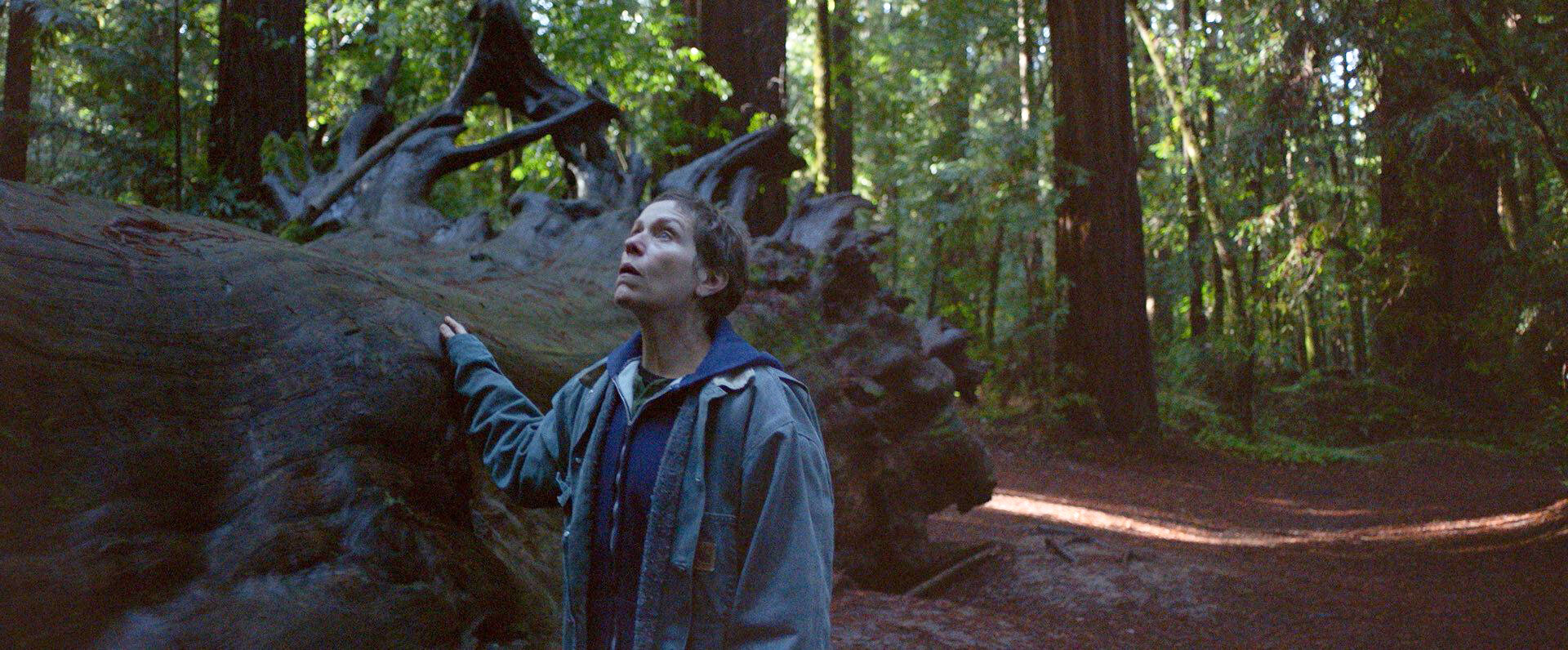See You Down The Road: Nomadland’s Path to Best Picture
Nomadland was released in February 2021 after premiering earlier in 2020 during the festival circuit. It was directed by Chloe Zhao, making it her third feature film and follow up to The Rider.
Fern, played by Frances McDormand, helps portray the struggle associated with the nomadic lifestyle in a subtle and nuanced performance
Zhao has always had a passion for the natural in her films, showcasing the beauty and fluidity of nature in her settings and camera movements. Nomadland is the culmination of this delicate approach, gliding from location to location as we follow a nomad, Fern, on her journey over the course of a year.
We follow Fern (played by Frances McDormand), a woman in her early sixties who has endured the loss of her husband, job, and town. Empire, the town in which she and her husband had lived for their entire marriage, had been abandoned after the local mine was shut down in 2011. Fern takes to the nomad life, buying a van that she lives out of and getting temporary work as she travels from town to town. While working at Amazon, she receives word from her friend, Linda May, that there is a gathering of nomads coming up in the desert. May encourages her to come, and to find a community and possible healing through the nomadic lifestyle. As Fern embarks on this lifestyle we see the intense highs and lows accompanying it, and bask in the beauty of Zhao’s American landscapes.
While not a deeply narrative film, Nomadland provides enough story to keep us hooked while we empathize with Fern as she travels across the country, meeting new people and sharing in new stories and experiences with them.
A soaring soundtrack and beautiful wide shots of the natural landscapes provide one of the most beautiful cinematic backdrops of the year. We are left to marvel at how Zhao and her cinematographer, Joshua James Richards, could have ever encountered, let alone captured, such magnificence and beauty on camera.
The aesthetics are only surface level where, on the other hand, Nomadland excels is in creating an aura of authenticity.
Nomadland is full of scenic landscapes and soaring vistas
Based on the book that chronicled the true accounts of Nomads following the great recession, most of the events of the movie are based in actuality. Empire was a real town that really did shut down after the loss of their principal employer. While Fern herself is fictional, many of the people in the film are not and are played by themselves; real nomads who are not professional actors in any capacity.
This is where the film finds its true voice. Zhao spoke of the process of finding these nomads, often having a small production crew travel to these locations a few days ahead to gather and document dozens to hundreds of stories and faces to find the perfect people to share this experience with. Anyone can tell the care that Zhao put into finding the nomads she shares with us, each with a more heartening and touching story than the last.
Of course, one cannot talk about Nomadland without also acknowledging Francis McDormand. McDormand won the Oscar for Best Actress for her part in the film, a well-deserved award that speaks to the performance of a lifetime she has in the film. Fern is a character made up of subtleties. While passionate and determined, she is also prone to a certain kind of avoidance in her life, that takes such a careful and determined balance to portray correctly, but McDormand excels in.
*Spoilers from this point on, if this is a film that can spoiled*
Fern ends the film in conversation with Bob Wells. He encourages her to let go of Beau, her former husband, and to live her life in the present instead of dwelling in the past. It’s a moving moment that has never failed to bring tears to my eyes. However, something never quite sat right with me about the ending. Because that’s not where the film ends. Instead, it goes on for an additional five or so minutes with Fern travelling to Empire, visiting her old house, and saying goodbye before cutting to black. The reason that this bugged me was because we experienced a sort of emotional catharsis and momentum with Fern’s conversation with Wells. This momentum is suddenly cut as we go back to the van once again. However, it was on my fourth viewing of the film that I finally understood the importance and significance of this ending for Fern’s character. She needed to visit Empire to say goodbye. As the final shot is her leaving Empire, it represents her leaving her past and entering her future without the baggage of “always remembering”.
Fern’s van plays a central role in the film, and was constructed by the cinematographer Joshua James Ricahrds prior to filming




